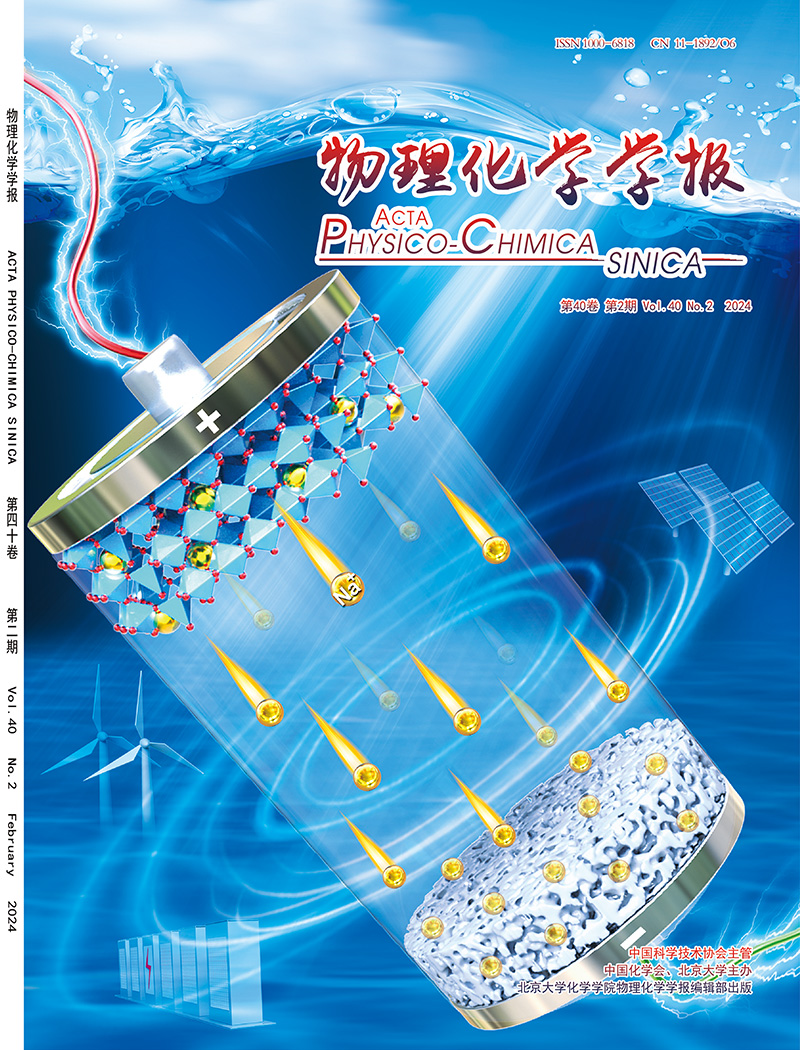In Situ Assembled ZnWO4/g-C3N4 S-Scheme Heterojunction with Nitrogen Defect for CO2 Photoreduction
IF 10.8
2区 化学
Q1 CHEMISTRY, PHYSICAL
引用次数: 0
Abstract
Reforming CO2 into storable solar fuels via semiconductor photocatalysis is considered an effective strategy to solve the greenhouse effect and resource shortage. Unfortunately, the problem of rapid photogenerated carriers severely limits the CO2 reduction capability of one-component catalysts. The fabrication of S-scheme heterojunctions with defects can result in efficient spatial separation of photo-generated charge carriers and increase adsorption and activation of nonpolar molecules. Herein, ZnWO4/g-C3N4 S-scheme heterojunctions with defects are constructed through in situ growth method. The experiments show that the generation rate of CO from CO2 reduction is up to 232.4 μmol∙g−1∙h−1 with a selectivity close to 100%, which is 11.6 and 8.5 times higher than those of pristine ZnWO4 and g-C3N4, respectively. In situ XPS and work function analyses demonstrate the S-scheme charge transport pathway, which facilitates the spatial segregation of photogenerated carriers and promotes CO2 reduction. In situ ESR illustrates that CO₂ molecules are adsorbed by nitrogen vacancies, which act as photoelectron acceptors during the photocatalytic reaction and are favorable for charge trapping and separation. The S-scheme charge transport mode and nitrogen vacancy work together to stimulate the efficient conversion of CO2 to CO. This work presents significant insights to the cooperative influence of the S-scheme charge transport mode and defects in regulating CO2 reduction activity.
- Download: Download high-res image (65KB)
- Download: Download full-size image
具有氮缺陷的原位组装ZnWO4/g-C3N4 S-Scheme异质结用于CO2光还原
通过半导体光催化将二氧化碳转化为可储存的太阳能燃料被认为是解决温室效应和资源短缺的有效策略。不幸的是,快速光生成载体的问题严重限制了单组分催化剂的CO2还原能力。具有缺陷的s型异质结的制备可以实现光生成电荷载流子的有效空间分离,并增加非极性分子的吸附和活化。本文通过原位生长法构建了带有缺陷的ZnWO4/g-C3N4 S-scheme异质结。实验表明,CO2还原生成CO的速率可达232.4 μmol∙g−1∙h−1,选择性接近100%,分别是原始ZnWO4和g- c3n4的11.6和8.5倍。原位XPS和功函数分析表明,S-scheme电荷传输途径有利于光生载流子的空间分离,促进CO2的还原。原位ESR表明,CO₂分子被氮空位吸附,在光催化反应中充当光电子受体,有利于电荷捕获和分离。s方案电荷输运模式和氮空位共同促进CO2向CO的有效转化。这项工作对s方案电荷输运模式的协同影响和调节CO2还原活性的缺陷提供了重要的见解。下载:下载高分辨率图片(65KB)下载:下载全尺寸图片
本文章由计算机程序翻译,如有差异,请以英文原文为准。
求助全文
约1分钟内获得全文
求助全文

 求助内容:
求助内容: 应助结果提醒方式:
应助结果提醒方式:


